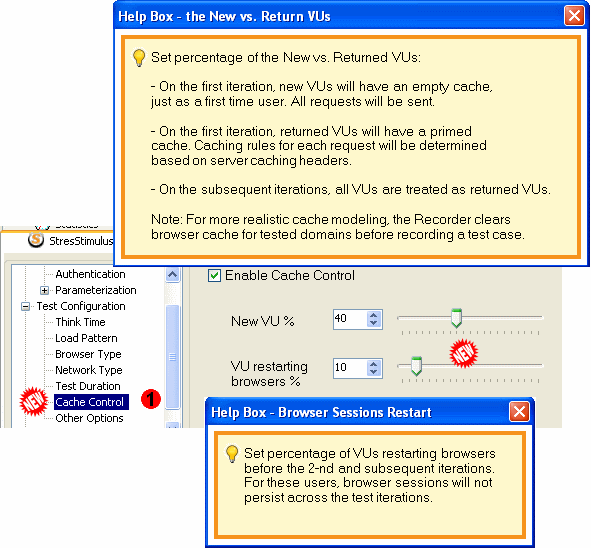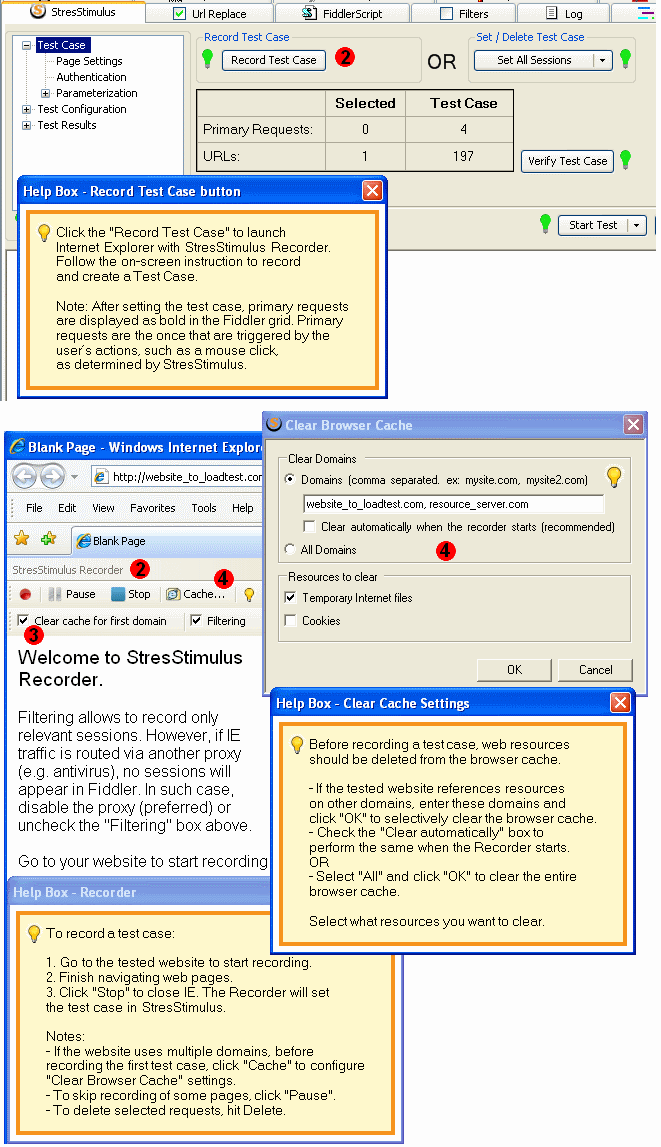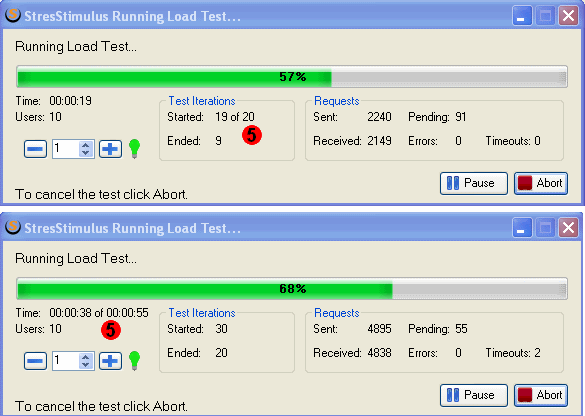V1.2 became the current official StresStimulus version. The release targets support for more dynamic applications and ease of use.
This 2-part post is an updated, substantially expanded revision of the previous post reciting the beta features.
1. Cache Control section in the navigation tree. The Cache Control section allows configuring a mix of virtual users with respect to their browser cache and session management behavior. If cache control is enabled, it allows configuring:
- The percentage of the New vs. Returning VUs:
- On the first iteration, new VUs will have an empty cache and all requests will be sent, just as a first time user.
- On the first iteration, returned VUs will have a primed cache. Caching rules for each request will be determined based on server caching headers.
- On the subsequent iterations all VUs are treated as returned VUs.
- The percentage of virtual users restarting browsers before the 2-nd and subsequent iterations ( vs. continuing to use the same browser session). For these users, browser sessions will not persist across the test iterations.

If the cache control is disabled, StresStimulus emulates a case where:
- All VUs are using browsers with disabled caching (all requests will be sent);
- All VUs are restarting the browser on the 2-nd and subsequent iterations so that the browser sessions do not persist across test iterations.
2. Browser recorder add-on to create more accurate test cases. Click the "Record Test Case" button to launch Internet Explorer with the StresStimulus Recorder add-on. In IE, go to the tested website and finish navigating web pages. To skip recording of some pages, click "Pause". "Stop" will make the Recorder close IE and will set the test case automatically. Using the Recorder assures that test cases are complete and free from many errors.

The most common issues fixed by the Recorder:
- The beginning portion of the navigation scenario is missing from a test case. The first request is not a primary request. This issue reduces the accuracy of load tests.
- The process of establishing application and browser sessions is not captured. This can cause multiple server errors during the load test because StresStimulus does not have enough information to correctly maintain a session's integrity.
- Unrelated requests from other open applications captured by Fiddler are included in the test case. This issue reduces the accuracy of the load test.
3. An option to selectively clear browser cache in the Recorder to increase the accuracy and reliability of load testing. When the test case is recorded with a primed browser cache, not all relevant requests will be included into the test case. Additionally, if tracking cookies are cached before recording started, the test case may not correctly reflect handling of new website visitors. The recorder fixes these issue by automatically and selectively removing unwanted cached resources before recording a test case.
4. An option to clear browser cache for multiple domains. If the tested website references resources on multiple domains before recording the first test case, click "Cache" to configure "Clear Browser Cache" settings. Enter additional domains and click "OK" and select what resources you want to clear. Check the "Clear automatically" box to perform the same when the Recorder starts. You also can clear the entire browser cache by selecting "All".
5. Progress bar enhancement. When the test duration is set to a number of iterations, the progress bar displays a number of started and total allocated iterations side by side.

When the test duration is set to a certain time limit, the progress bar displays elapsed and total allocated time side by side.
Additionally, many buttons now incorporate meaningful images for better user experience.
Read the Part 2-->